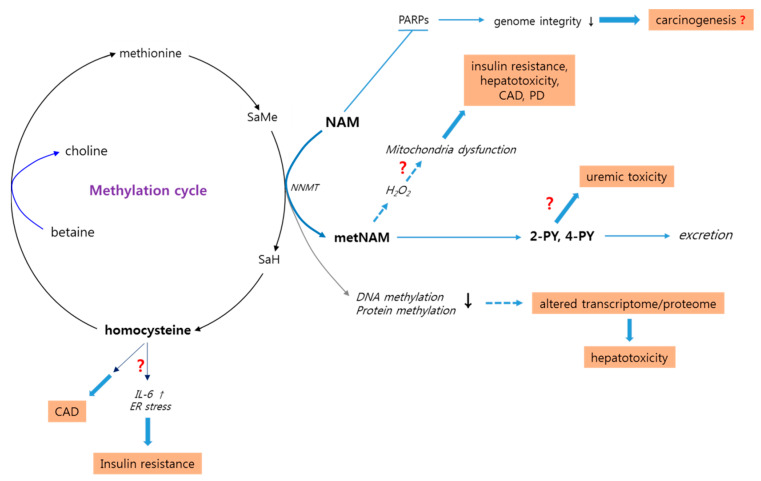Figure 2.
Routes of possible adverse effects of high doses of NAM. High-level NAM has been proposed to induce disorders through multiple different routes. First, NAM inhibits PARP proteins, thereby inducing anti-inflammatory effects but also causing genome instability, which may lead to carcinogenesis. Second, methylation of large amounts of NAM can lower the cellular methyl pool. This leads to reduced methylation of DNA and proteins, thereby changing patterns of gene expression and protein activity. This is proposed to be etiologically linked to liver steatosis and fibrosis. Meanwhile, NAM methylation yields metNAM, which, by inducing high level ROS generation and subsequent dysfunction of mitochondria, may cause development of insulin resistance, coronary artery disease (CAD), and Parkinson’s disease (PD). However, it is not clear whether metNAM-induced ROS generation is harmful. MetNAM is further metabolized to N-methyl-2-pyridone-5-carboxamide (2-PY), whose elevated blood levels can be toxic to patients with chronic renal problems. Meanwhile, increase in the methylation cycle by high-level NAM would lead to an increase in the level of homocysteine, which, by upregulating interleukin-6 (IL-6) expression and inducing endoplasmic reticulum (ER) stress, may trigger insulin resistance and CAD. However, most of these proposed links between high-level NAM and the conditions are poorly supported by experimental evidence.

